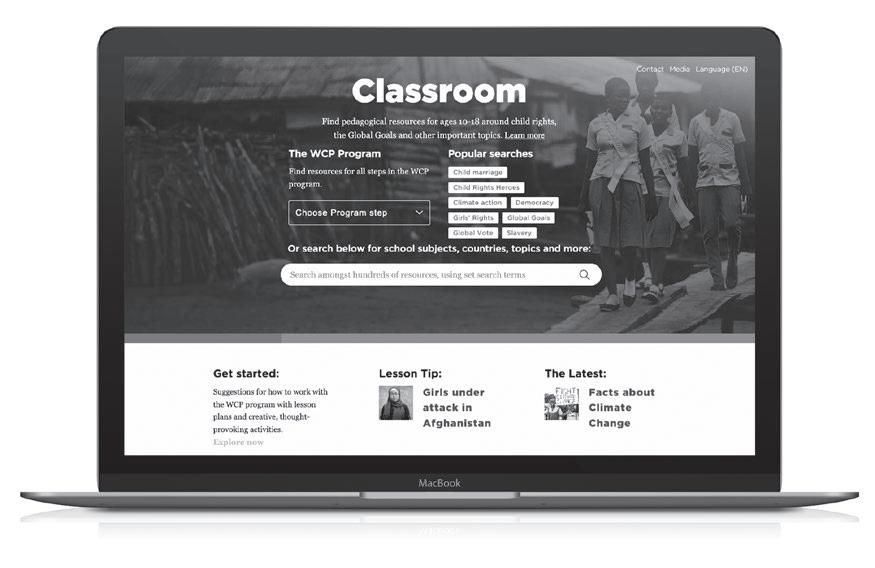
1 minute read
CREATE EFFECTIVE COMMUNICATION
Let your students try different ways of formulating messages, and find out what is most effective.
1. Repeat which children’s rights issues the students have learned about in the WCP Program and The Globe – everything from girls’ rights to threats against the environment, children not being able to go to school and much more. You can give some examples to get the students started.


2. Let the students think quietly for a moment and pick at least two areas where they want the respect for children’s rights to increase. At least one suggestion should be about things they experience in their own everyday life.

3. Explain that there are different ways to spread knowledge and demand change. Give some examples (see below) and then let the students suggest their own ideas. They can:
• Paint posters and placards with short, powerful calls to action.

• Write speeches, poems or short plays.

• If you have internet access and electronic devices, you can also use social media and post memes, photos, videos and text on platforms like Instagram and TikTok.
4. Show inspiring examples in The Globe on p. 34–36, and 98–113.
5. Let the students work individually, in pairs or groups and create placards and other materials with their messages. They should have access to materials such as pens, brushes and paint, large sheets of paper or cardboard.
6. Let all students show and talk about what they have produced, and what reactions they think they will get.











